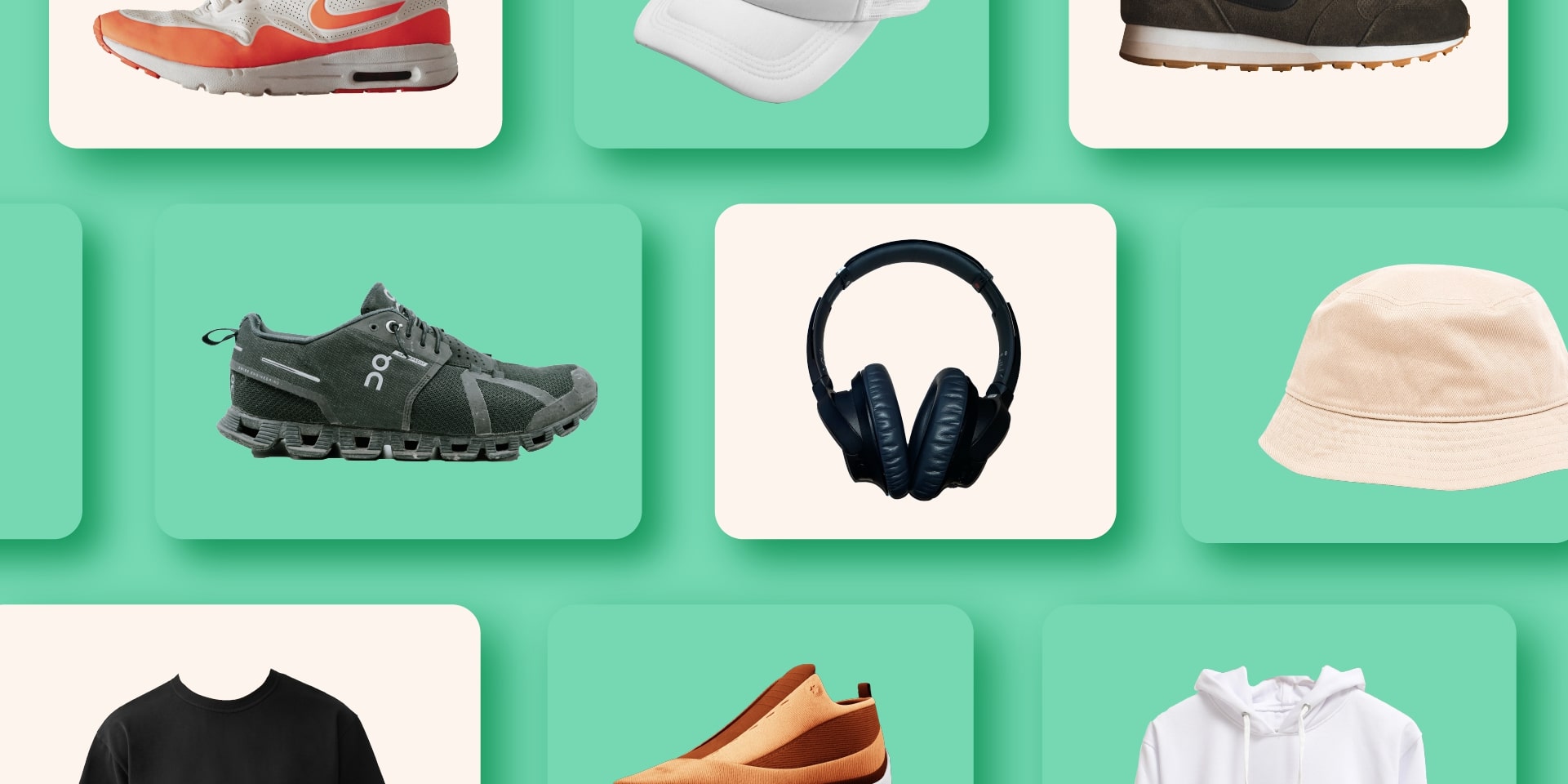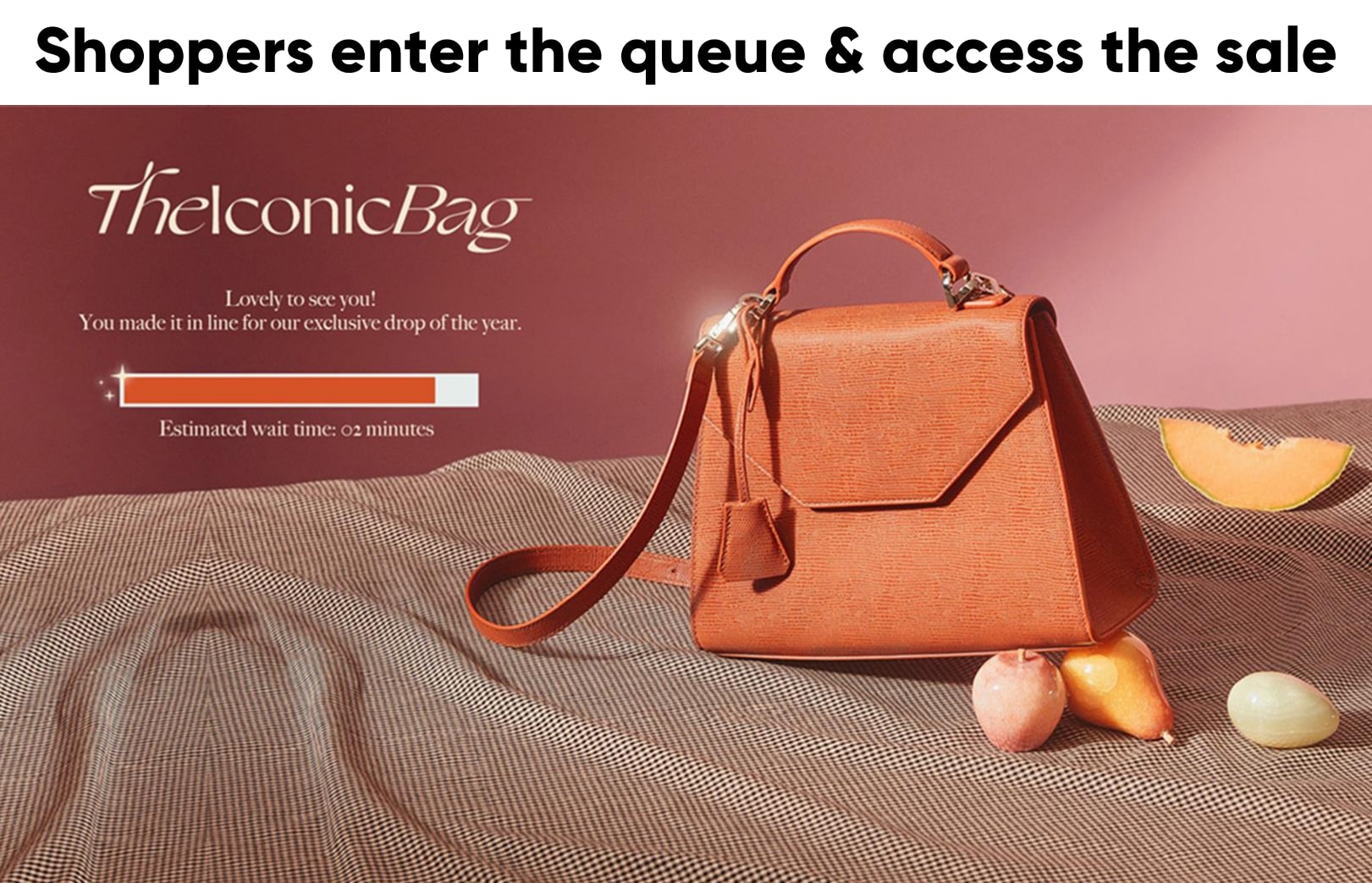Major brands across industries are embracing product drops. But why? Discover everything there is to know about product drops in this article, including the definition of a product drop, the marketing psychology behind it, the 5 benefits of product drops, dozens of product drop examples, and 8 key strategies for product drop success.
What do Nike, Rihanna, Pokémon, McDonald’s, YouTube, and IKEA have in common?
They’re among a new wave of brands embracing the product drop strategy.
But what are product drops? How are they different from product launches? And why is just about every major brand trying them out?
From over a decade of working with major product releases with brands like The North Face, Snipes, Zalando, and Rapha, we've had a front row seat to the rise of product drops and learned a lot about what it takes to run successful drops.
In this article, we’ll draw on these insights to uncover everything you need to know about the product drop trend. You’ll discover the marketing psychology behind drops, how product drops differ from product launches, the 5 benefits of product drops, dozens of product drops examples from across industries, and 8 key strategies for a successful product drop.
Table of contents
Product drops are the release of products that are scarce in availability or scarce in quantity. This means they’re either time-limited product releases, or product releases where supply is intentionally low.
Typically, product drops take this second form of limited supply. Drop examples include:
- Sneakers dropping in a limited-edition colorway
- One-off brand collaborations
- Merchandise connected to an event, album, or film release
- A series of NFTs that will never be released again
Product drops are a simple concept, and one that’s been around for a while, but it’s only recently that major brands have started regularly incorporating product drops into their core business models.
And it’s only recently that a new type of consumer emerged—one obsessed with getting their hands on hard-to-get goods.
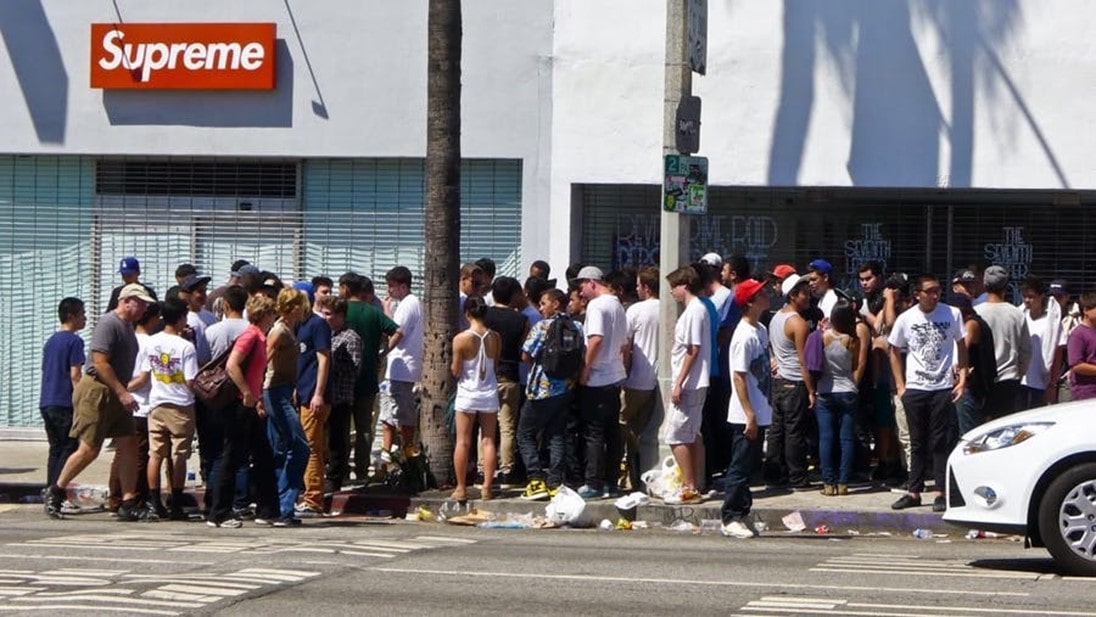
Product drops differ from product launches because there’s no promise the products will continue to be made and sold after the initial drop. This means product drops almost always involve scarcity and urgency, making it essential for customers to be present the moment the product becomes available. Product launches, on the other hand, are just the start of a long period of production and availability.
Product launches are for core brand products, such as a new laptop, phone, or vacuum cleaner. Product drops are typically products outside a brand’s core range, such as a laptop in a limited-edition color, a collaborative fashion collection, or a piece of merchandise connected to an album.
You can see the difference between a drop and a launch in the two HYPEBEAST headlines below. Dyson launches their new headphones after “6 years of development”, and Balenciaga drops their new speaker collaboration with Bang & Olufsen and Mercedes “in very limited quantities”.
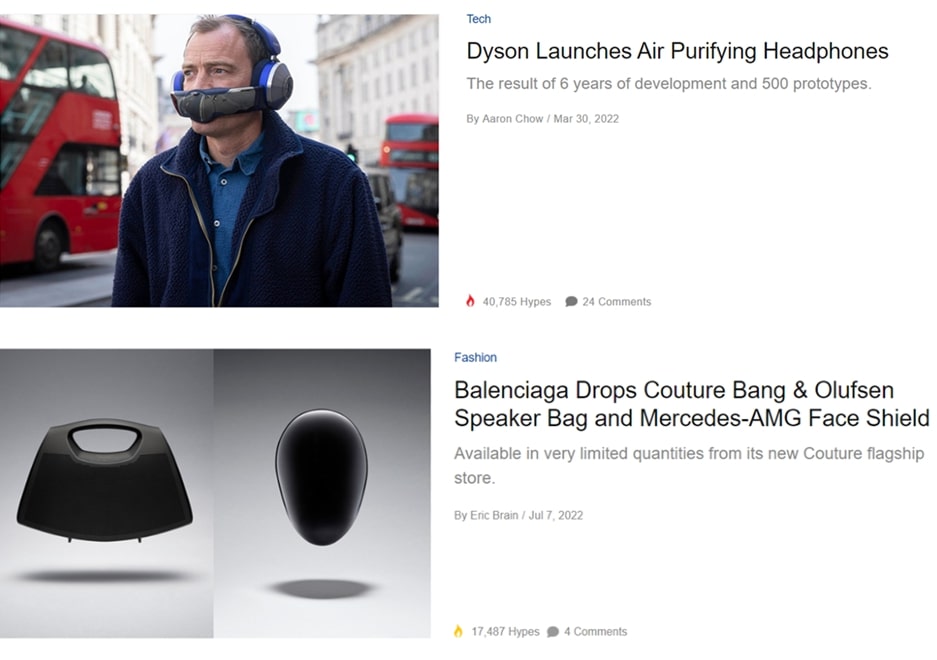
There are two key psychological explanations for the success of product drops: scarcity marketing and anticipation psychology. Together, these two psychological levers help build hype, create memorable experiences, and keep customers wanting more.
Get a free interactive checklist for successful product drops
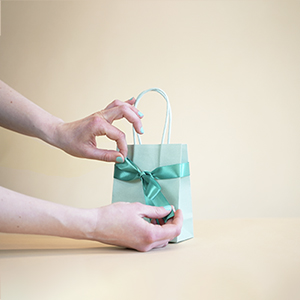
Scarcity marketing is a strategy used by businesses to increase the perceived value of products by reducing supply. This can be done by creating scarcity around offers on products (e.g., 40% off sneakers for one day only), or by reducing the supply of products (e.g., only 100 sneakers available).
You’ve probably experienced scarcity marketing yourself. It’s at work when you’re shopping deals on Black Friday, buying airline tickets that are “the last available at this price”, or paying price premiums for tickets to a sold-out concert.
In all these instances, scarcity increases your sense of urgency and fear of missing out (FOMO). You think, “if I don’t get it now, I never will.”
Product drops are a scarcity marketing strategy. They turn shopping into a blink-and-you'll-miss-it opportunity for customers, which drives hype and boosts conversions.
The scarcity marketing of product drops also succeeds because of our desire for uniqueness. One survey found 45% of consumers are interested in product drops specifically because they value access to products that are difficult to obtain.
This stat shows why product drops fit so well into the fashion world. There’s an appeal in knowing you’re unlikely to run into anyone wearing your sneakers or jacket—especially for hyped drops where competition is high and the products are a form of social capital.
When Nike drops a new sneaker colorway and creates only 10,000 of them, they immediately generate hype around that shoe. While their classic models have millions in circulation, the new design allows buyers to join an exclusive group of owners. And it’s this exclusivity and urgency that leads these limited-edition drops to sell out fast.
RELATED: 7 Simple Scarcity Marketing Strategies to Supercharge Ecommerce Sales
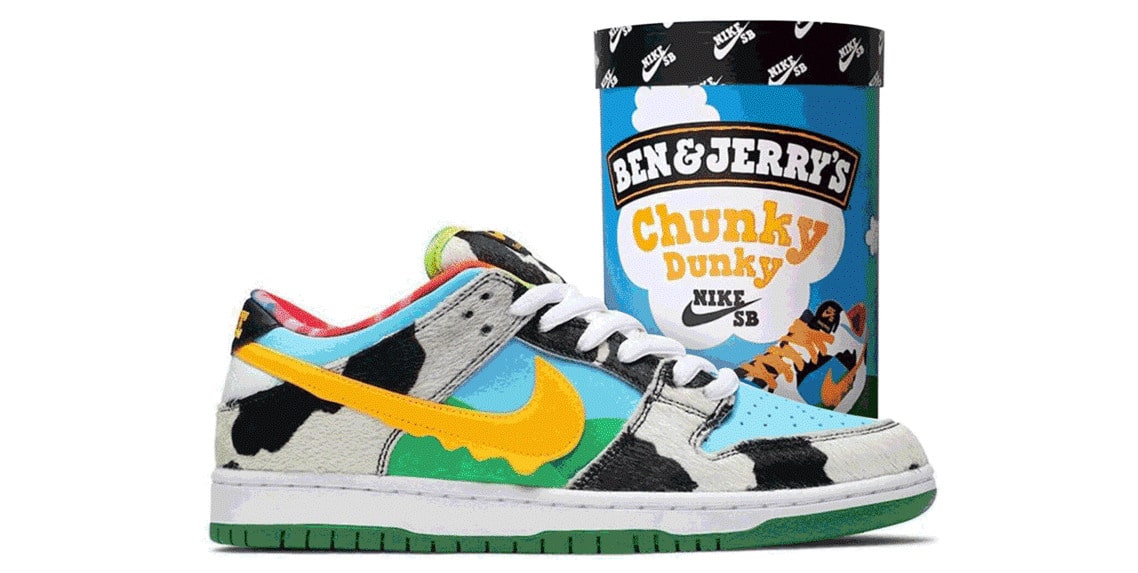
All purchases involve anticipation. No one buys something without some expectation of what it is, how it will serve them, and how it reflects on them.
Dozens of psychological studies show the astounding power of anticipation. You can learn more about this research in our article on anticipation psychology, but for the purposes of this blog, a few key findings on positive anticipation stand out:
- It creates a greater sense of wellbeing and excitement
- It increases sensitivity to rewards
- It strengthens the memory of anticipated events
These findings mean if brands successfully stir up positive anticipation through product drops, customers are likely to:
- Have a stronger sense of excitement for your product/brand
- Be more satisfied with the product when they get it
- Remember their purchase better afterwards
Take Kim Kardashian’s brand SKIMS, for example. SKIMS runs weekly drops where they add new styles and restock customer favorites in limited quantities. This means many SKIMS customers actually miss out on the product they want several times.
Each time customers try to get the product, their anticipation builds.
And what happens when those customers finally get the SKIMS products they’ve been fawning over?
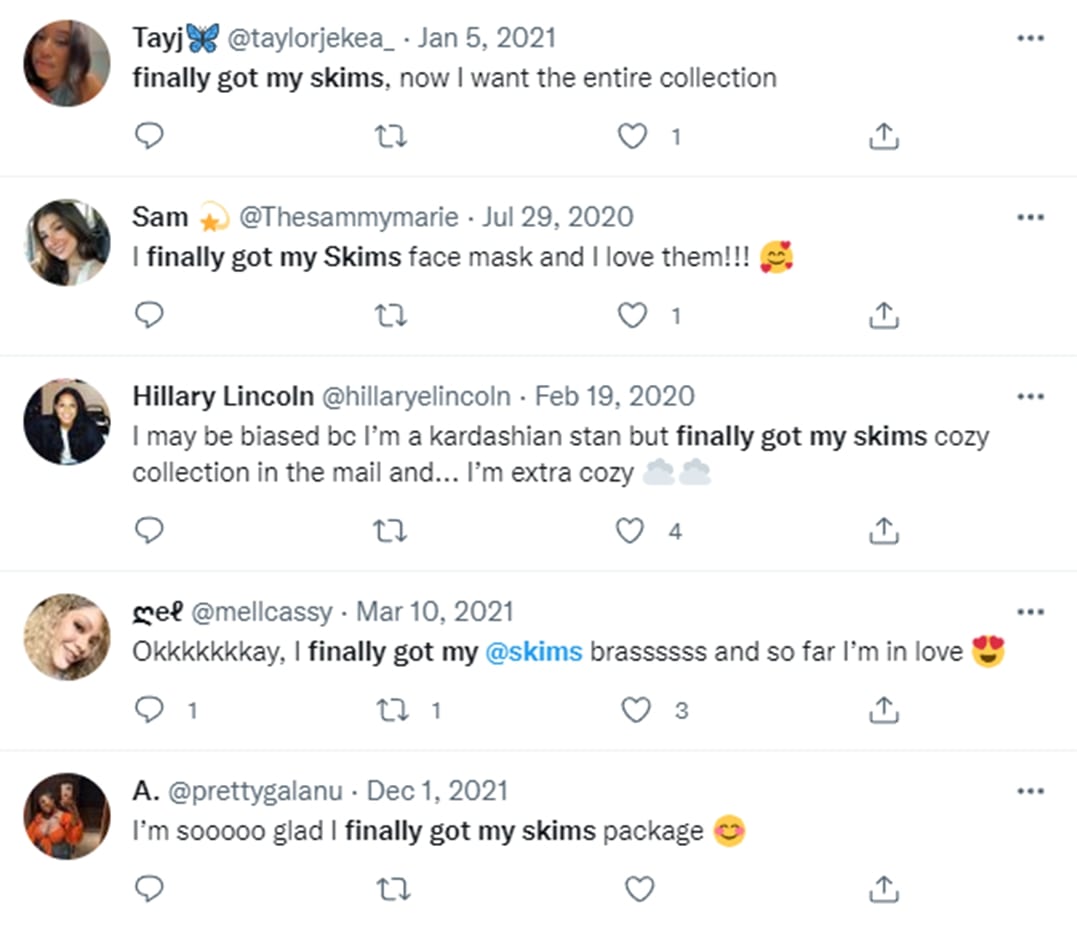
You won’t find people Tweeting in this way about impulse purchases, or their new toaster. But for brands that successfully leverage anticipation—Nike, Apple, SKIMS—you’ll find thousands of Tweets of customers celebrating their purchase, showing it off to the world, feeling proud and accomplished.
Anticipation psychology explains the hype that builds around product drops. It explains why 67% of consumers report increased brand affinity after product drops. And why 54% of consumers are willing to wait in line for a product drop (with another 23% at least somewhat willing to wait).
Anticipation builds excitement, but it also makes your products more likely to be enjoyed, and your customers more likely to form strong brand memories.
RELATED: The Power of Anticipation Psychology & How to Use It for Ecommerce Marketing
Product drops are a powerful marketing and sales tool.
One fashion industry survey found 66% of respondents consider the product drop model important or very important to their business. For footwear brands, that number was 78%.
Product drops help brands generate hype, put customers into nurture flows, boost brand affinity and reputation, and shift from discount-based scarcity into product-based scarcity.
The product drop model may be a sales delivery method, but like flash sales, its major benefits lie in its marketing value.
Product drops let retail marketers act like musicians and movie studios. The product drop model enables marketers to regularly tease new products to get customers excited, engage in unexpected brand collaborations to tap into new audiences, and drip feed customers and journalists content for speculation and conversation.
Product drops are about the new and novel. About tapping into anticipation and excitement. About creating a brand moment.
James Jebbia, the founder of the most famous product drop brand of all time (Supreme), told Vogue, “My thing has always been that the clothing we make is kind of like music.”
Byron Hawes, author of the book Drop, mirrors this idea of drops as entertainment, saying, "We would go up to Palace, or wherever Supreme would drop, and kids would literally be there all night. It’s like a new Star Wars movie or something.”
No one talks about buying the same grey hoodie GAP has sold for decades. But when GAP drops their limited collaboration with Kanye West’s Yeezy, headlines are published, fans line up, and the demand is so high it crashes their website.
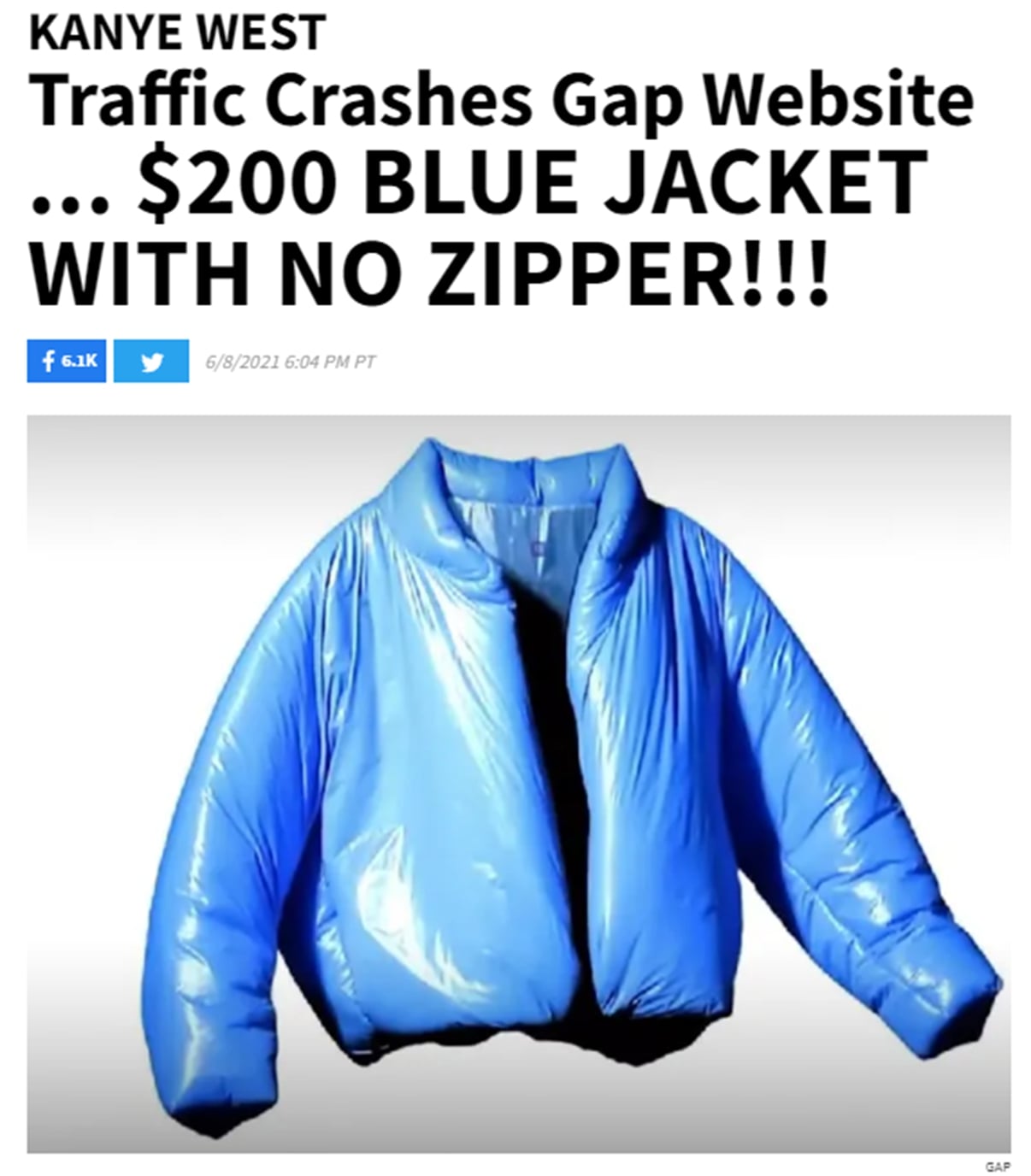
RELATED: 6 Common Product Drop Challenges & How to Overcome Them
Brands that consistently leverage the product drop marketing strategy create a space in which communities form around their brand or product category. This is because the entertainment value of product drops consistently gives customers content to discuss, share, and engage with.
We see this most prominently in the sneaker world, where events like Sneaker Con attract thousands of guests and content like Complex’s Sneaker Shopping videos get celebrity guests and millions of views.
Sneaker culture isn’t just buying and selling shoes—it’s entertainment. It has the exciting elements of competition (Adidas vs. Nike), brand and celebrity collaborations, and an unending stream of drops that allow brands to build awareness, boost affinity, and foster community.
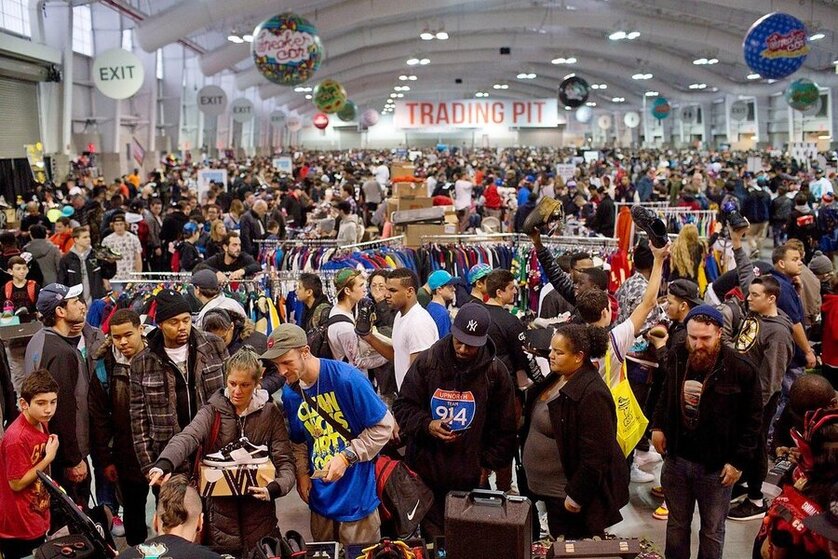
The second key benefit of the product drop model is it enables you to leverage the power of scarcity marketing without discounting products.
Scarcity marketing is often associated with flash sales, drawing customers in with language like “get this 40% discount while it lasts”. But when using limited inventory scarcity marketing, you can sell items at full retail price and still have customers feel they’re nabbing a great deal.
Product drops transform your products from something you wish customers would buy into something your customers wish they could buy.
You can see the benefits of scarcity of inventory in the examples we’ve outlined above, but it also applies to limited inventory restocks.
Whether intentionally or not, products like Sony’s PS5s and AMD’s graphics cards were incredibly difficult to purchase when they were released. Both companies restocked when they had supply, making these restocks regular events that have similar scarcity marketing and anticipation effects to product drops.
To be clear, the release of the PS5 was a product launch, not a product drop. But Sony’s struggle to keep PS5s in stock and their model of regular limited supply restocks means they reap many of the same benefits as brands that engage in product drops.
Two years after the release of the PS5, there were still dozens of headlines posted weekly about restocks and availability. A Twitter account dedicated to PS5 stock alerts has 1.1 million followers. These restocks see thousands queue in virtual waiting rooms.
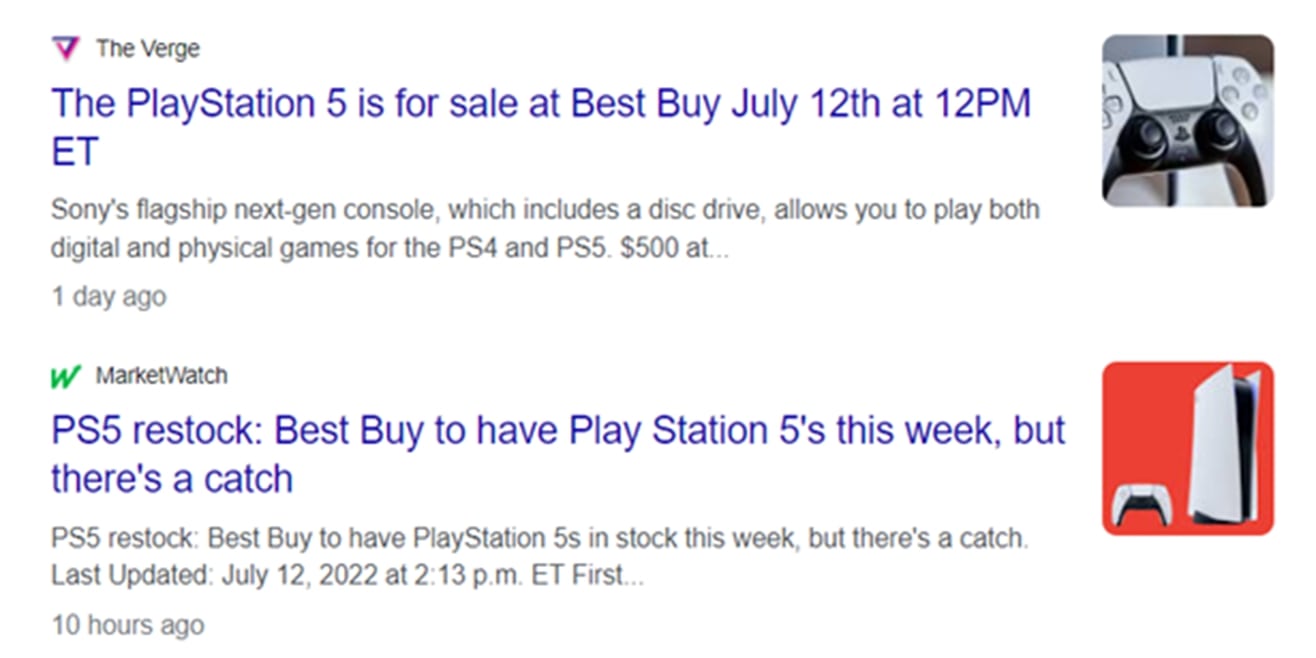
Customers love getting a good deal. And the scarcity of PS5s meant customers who got their hands on one felt like they’re getting a good deal despite paying the full retail price.
Product drops let customers feel like they’ve won a prize or gotten away with something they shouldn’t have, all while still paying the full retail price. That’s why 76% of customers who take part in product drops are very or extremely satisfied.
Shifting from discounts to drops helps brands achieve satisfied and engaged customers without sacrificing their margins. It replaces customers’ shopping guilt with a feeling of shopping glee.
The product drop trend is closely related to another fast-growing ecommerce trend: loyalty programs.
Ecommerce loyalty programs are a way of formalizing and strengthening relationships between brands and consumers. They aim to deepen brand trust, expand brand touchpoints, enable personalization, and nurture loyalty.
To achieve these benefits, loyalty programs typically offer rewards, discounts, and other exclusive benefits in exchange for repeat purchases, personal information, and/or recurring payments. Examples include Walmart+, Amazon Prime, eBay Plus, adidas adiClub, Starbucks Rewards.
RELATED: Ecommerce Loyalty Programs: How To Keep Customers Coming Back for More
One survey found 70% of consumers spend more with brands when they’re part of a loyalty, member, or subscription program.
But when brands want to form relationships through loyalty programs, they face a key question: how can we deliver enough value to customers to make a relationship worthwhile?
Tactics like giving newsletter subscribers 10% off their first order are a start, but this does little to ensure continued engagement with the brand.
The product drop model is highly conducive to capturing loyalty program members because it creates more engagement opportunities and heightens competition and demand for products.
When there’s competition for goods, customers will do anything they can to get a competitive advantage. And brands are leveraging this desire for an advantage to nurture loyalty and form brand relationships. Examples of this include:
- Nike and Adidas drop products customers can only purchase on their mobile app
- Walmart and Best Buy offer early access to drops and sales for paid subscribers
- Aimé Leon Dore and SKIMS run invite-only product drops and private sales for members
- Sony and AMD have a sign-up form for restocks to gather email addresses
- SKIMS delivers first notifications of restocks to newsletter subscribers
- Louis Vuitton and other luxury brands reserve products for high-value customers
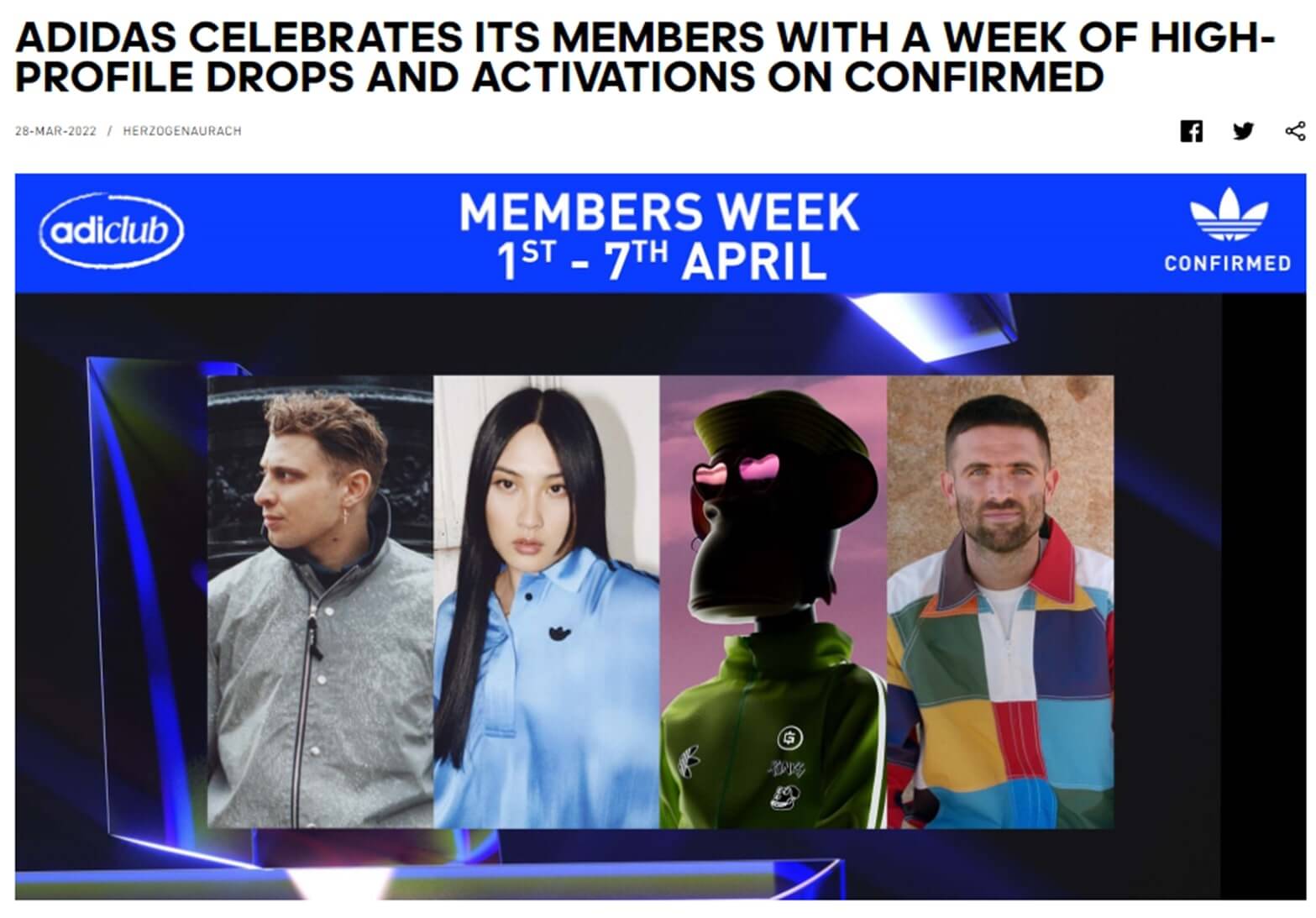
Exclusivity is a powerful thing. When used right, the exclusivity of product drops can be leveraged to incentivize stronger connections and commitments between customers and your brand.
Forming these relationships through loyalty programs makes customers more likely to spend more with your brand and gives you valuable communication channels to nurture their loyalty.
RELATED: 79 Staggering Statistics That Show the Power of Loyalty Programs
Alongside the scarcity marketing value of product drops, anticipation psychology drives much of the product drop hype cycle and success of brands with this model.
With product drops, you take your brand beyond a traditional store that customers can walk into and purchase products at their convenience. Instead, customers must work and wait for your products. Your product announcements become news headlines and fodder for social media chatter. People get excited about your events.
While brands like Apple do this only once or twice a year, brands that are truly successful with a drop model have this cycle happening constantly—either with product drops or limited-inventory restocks.
By drawing the purchase experience out over a longer period, you draw out customers’ anticipation. This helps them build more excitement around your brand, but it also means that when they finally get their hands on products, they’ll be more likely to enjoy them, more likely to share them on social media, and more likely to remember their purchase.
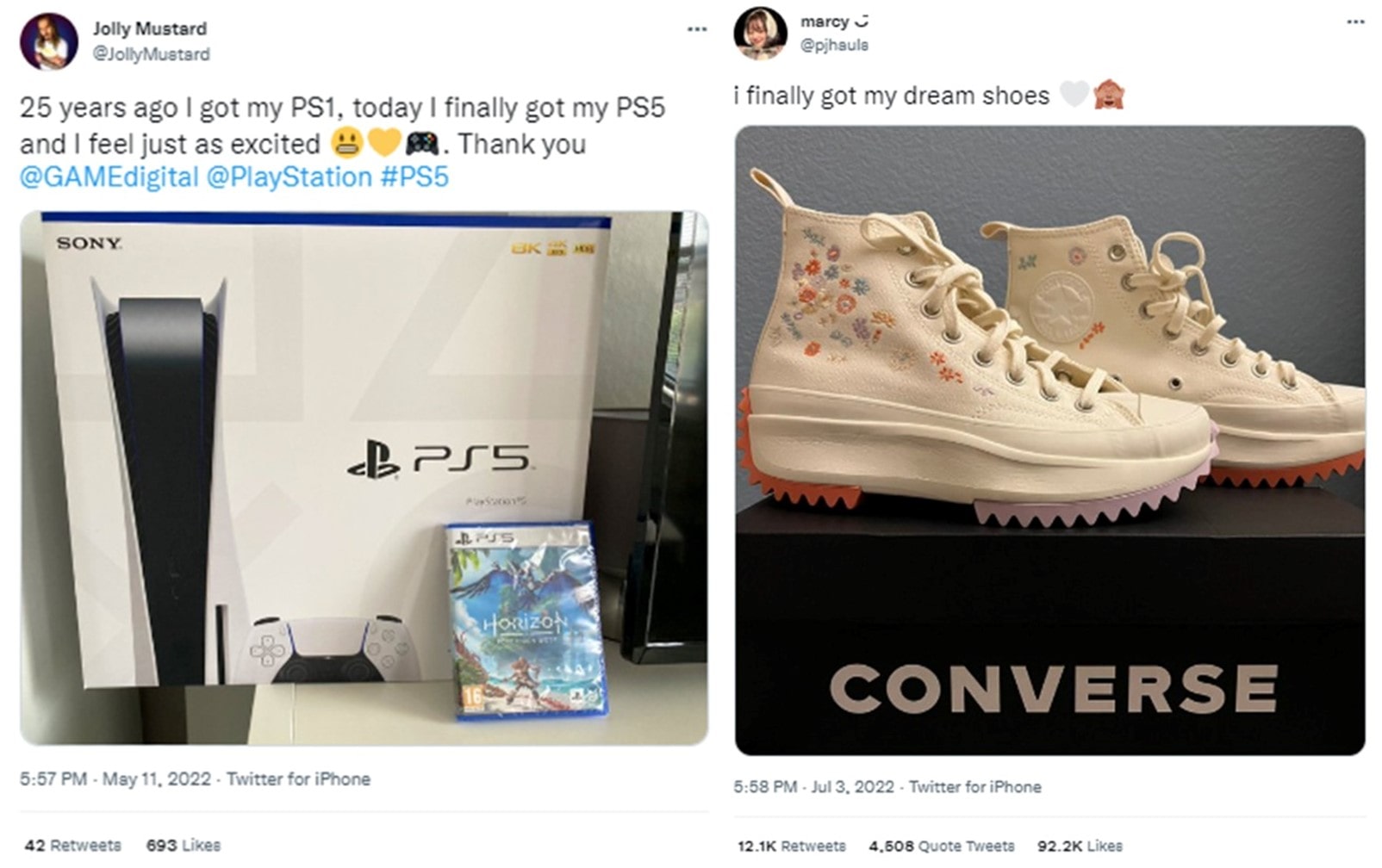
One of the key perks of the product drop model is its benefits extend far beyond the single product drop or brand collaboration you’re engaging in. For many brands, product drops boost sales of core products.
By building hype around your brand, creating headlines about it, and tapping into scarcity marketing and anticipation psychology, you elevate overall brand awareness and affinity, and these benefits flow back to your core product range.
The recent success of New Balance provides the perfect example of this.
In 2018, New Balance activated the brand’s first dedicated collaborative drop strategy. This strategy took the brand from dad fashion to high fashion in just a few years.
Following strategic collaborations with underground “it” brands like Aimé Leon Dore (ALD) and JJJJound, interest in old New Balance silhouettes like the 550 and 990 boomed.
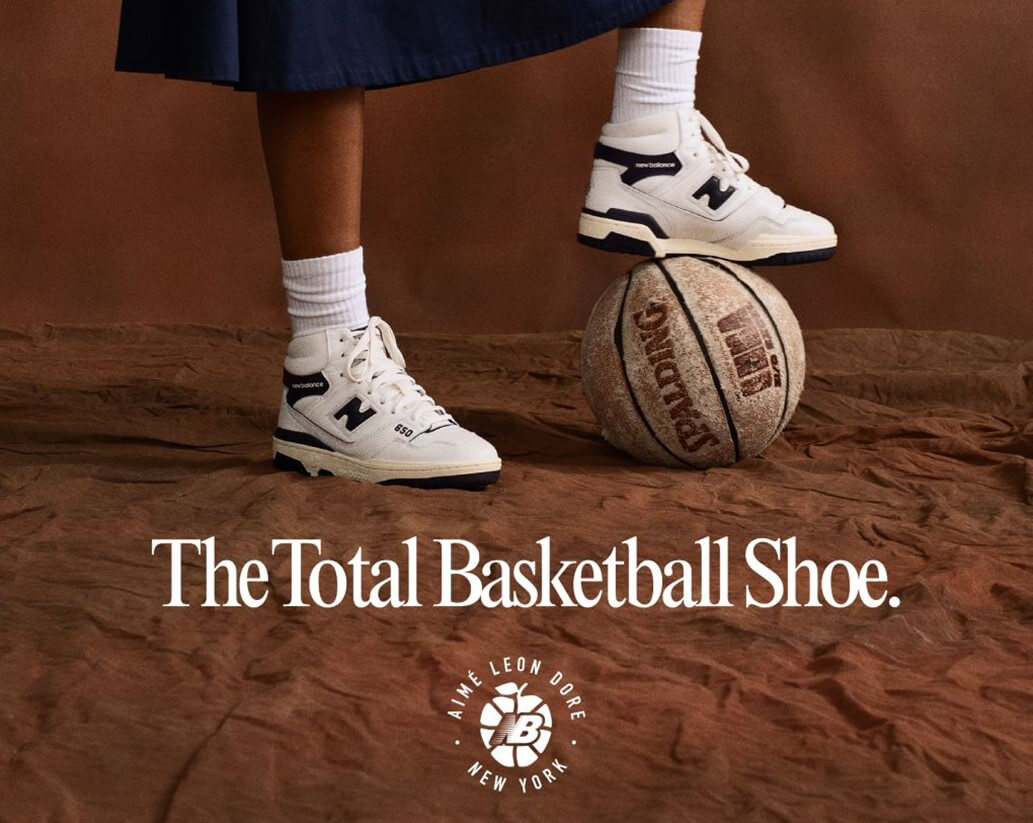
The collaborative drops with these brands sold out quickly. But shortly after these sales, something else happened. The original shoes the collaborations were based on sold out too.
The collaborative sneakers were sold out everywhere. But the originals, which looked very similar, were still available—at least for a moment.
Fast forward to 2023, and these core models were some of one of the hottest sneakers of the year. Sold out nearly everywhere, restocks of the 550 silhouette saw virtual queues of over 70,000, according to Glamour Magazine.
Google Trends shows interest in New Balance more than doubled year over year in the first half of 2022. The brand is having its moment.
Something similar happened to GAP inc. after they announced their (ill-fated) 10-year partnership with Kanye West. The once waning brand inserted itself into the zeitgeist with by partnering with one of the pioneers of product drops (West), and the brand’s share price jumped 20% within a day.
New Balance and GAP’s stories show brand collaboration product drops are rarely just about the collaboration—they’re about the brands. Likewise, they’re rarely about the sales of the limited-edition products—they’re about sales of core products.
We’ve already covered many product drop examples in this article, from sneaker to streetwear to high fashion to fast fashion.
In this section, we’ll cover some product drop examples beyond the world of fashion, but we’ll also take a deep dive into how a contemporary brand with the product drop model at its core reinvented a product category and reached a $3.2 billion valuation in under 4 years.
RELATED: 27 Successful Product Drop & Brand Collaboration Examples for Inspiration
Kim Kardashian’s shapewear brand SKIMS’ initial collection sold out 10 minutes after the brand launched. Less than a month later, SKIMS launched a new collection with a presale waitlist. That collection sold out too.
These first couple months set the tone for how SKIMS would operate for years to come.
SKIMS used product drops, brand collaborations, and (of course) influencers from the start. Almost 4 years later, Kardashian’s SKIMS still sells products almost entirely through a product drop business model.
SKIMS sells direct-to-consumer (DTC) and through a very limited number of retailers. New products and restocks are dropped weekly in batches of between 20,000 and 200,000, designed to sell out fast.
This model means thousands of customers miss out on the first sale.
Headlines are published about an instant sell out.
Interest builds.

Those who manage to get the products feel like they’re part of an exclusive club, and post unboxing videos, reviews, and photos and videos with the clothes on.
People who missed out and are waiting for a restock consume this content and their desire for the goods grows.
By the time the next release or restock drops, hype has built, the new collection sells out, and the cycle continues.
One of SKIMS’ dresses, for example, has over 110 million views on TikTok and a waitlist of 46,000.
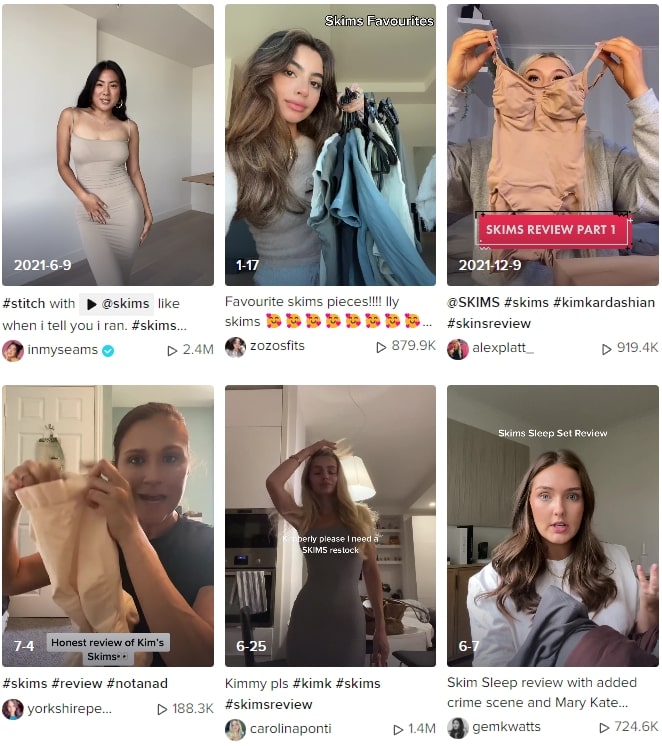
To ramp up this hype and scarcity cycle, SKIMS frequently engages in influencer marketing and high-profile limited-release collaborations, including with the fashion house Fendi, crystal brand Swarovski, and the NBA and U.S. Olympic teams.
SKIMS products go on sale only twice a year, in a time-limited sale. And when their products do go on sale, it’s typically private sales giving newsletter subscribers invite-only or first access.
RELATED: Roll Out the Red Carpet for Loyal Customers with Exclusive Invite-only Sales & Drops
Granted, SKIMS has the advantage of being attached to a major celebrity. But celebrity brands don’t always succeed, and SKIMS is a contemporary brand that found success through a contemporary retail model.
The brand taps into many of the product strategies we’ll cover in the next section of this article. SKIMS succeeds by:
- Keeping customers interested and engaged with scarcity marketing
- Maintaining a fresh product offering with regular new collections and collaborations
- Curating their brand with DTC sales and a very limited number of additional retailers
- Building hype with both organic and paid influencer marketing
- Upholding their brand value by rarely discounting products
- Nurturing loyalty and capturing loyal members with private sales
- Capturing newsletter subscribers and followers with restock notifications and product waitlists
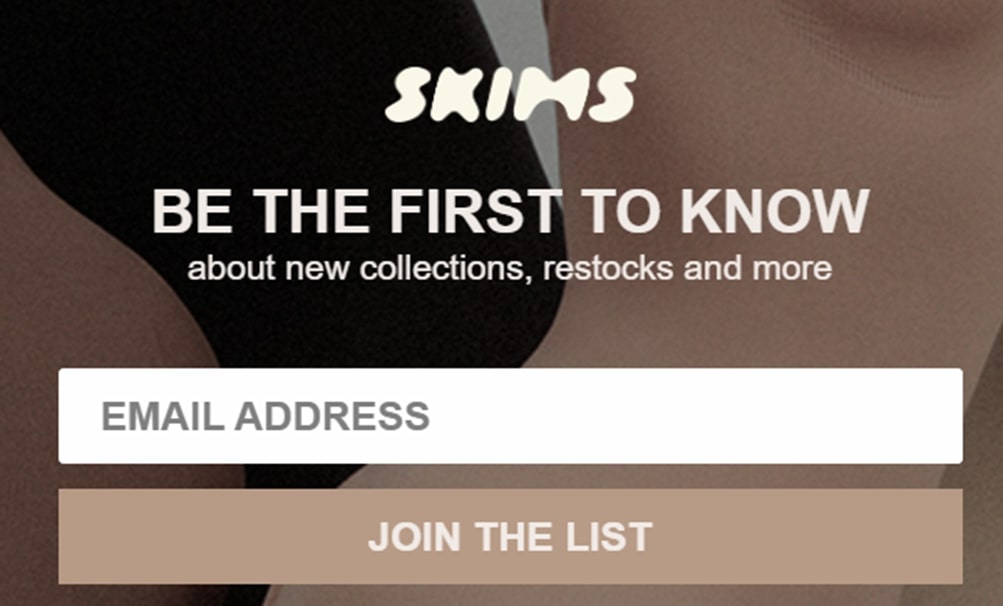
It's safe to say the product drop trend has grown far beyond its roots in the worlds of sneakers and streetwear. Let’s look at how other brands, from software companies to fast-food chains to furniture companies, have tapped into product drops to boost their brand:
- McDonald’s has started releasing limited-edition collaborative meals with rappers and celebrities, such as the Travis Scott meal, which led to a shortage of ingredients. (This isn’t McDonald’s first product drop foray, as people familiar with the sporadically available McRib sandwich will know).
- DoorDash recently announced access to exclusive product drops as part of their food delivery subscription service.
- Prada now does monthly product drops, releasing one new product each month that’s only available for a 24-hour window.
- Tech startup Stir has started software product drops, releasing simple but useful one-off pieces of software, like OnlyTweets, which lets Twitter users put their account behind a paywall.
- MSCHF is a brand that does nothing but random limited-supply drops, dropping everything from new fonts to alcoholic drinks to Tiffany & Co. collaborations.
- The value of NFTs is predicated on scarcity and hype, and product drops are just about the only way they’re sold.
- Video games like Fortnite regularly drop limited-time in-game experiences, such as the immersive Travis Scott concert that attracted over 12.3 million concurrent players.
- Even YouTube and X (formerly Twitter) have incorporated product drop functionality into their service, letting creators drop products during livestreams (YouTube) and customers sign up for drop reminders within the X app.
- IKEA made its foray into drop culture with a much hyped collaboration with architect, designer, and influencer Virgil Abloh, releasing limited-edition furniture items fans raced to buy.
This list of product drop examples could go on forever. But by now you should get the point—drops aren’t just for sneakers and mega-celebrities, they’re a new retail conversion play that’s seeing success for brands of all shapes and sizes.
Oops, you dropped something. Here you go: it’s your free interactive product drop checklist

We’ve established product drops succeed through scarcity, so one of the first steps to achieving successful product drops is understanding the strategies that supercharge scarcity marketing.
Here’s a few of the most important:
- Frame scarcity in terms of demand: Psychologists have found that scarcity marketing works best when combined with social proof. This means you can boost the efficacy of your scarcity marketing by letting consumers know products are being restocked due to popular demand, or are selling fast, or are 90% sold out already.
- Use numbers to foreground scarcity: Placing specific numbers on ecommerce product pages allows retailers to recreate the scarcity and social proof effects seen in brick-and-mortar stores. Examples of this include: “4 items left in stock”, “6 people viewing this item”, “This item is in 12 people’s carts”, etc.
- Use a virtual waiting room: Virtual queues are set up for the internet’s most hyped sales, product drops, and events. By making customers wait for what they want and showing off how many people they’re competing with for the product, they mimic the social proof that's usually created by real-world queues, which have been shown to increase conversions and order value.
- Make customers feel like it’s a special/exclusive experience: Product drops work best when customers feel like there’s a limited opportunity, when they create FOMO. Use language in your communications that express this. The Nike drop copy below is a perfect example: They have “something extra-special”, “available only in the Nike App”—their “coveted comeback styles”, “are hot and quantities will be limited, so don’t sleep on this event.” Use your marketing material to show your drop is an event customers can’t afford to miss.
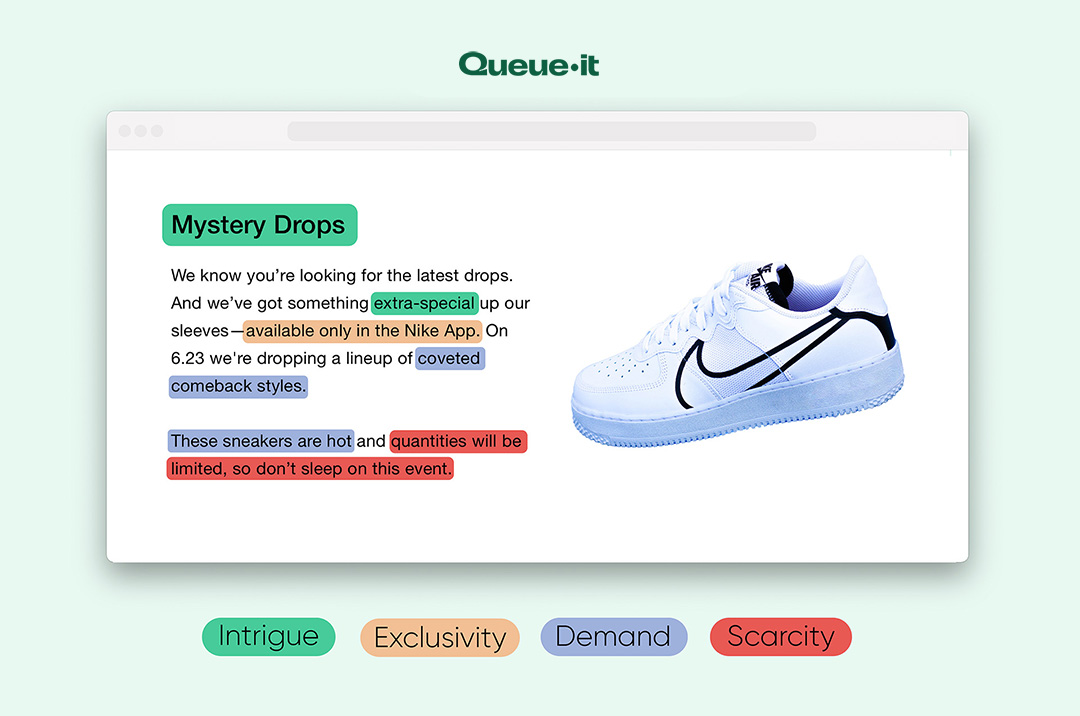
Anticipation psychology is a less established domain of marketing than scarcity marketing. So to understand how to leverage anticipation, it’s best to take inspiration from the entertainment industry.
So, how does Hollywood generate hype and anticipation for a new movie?
Movie studios announce the movie, release posters, publish teaser trailers, full trailers, final trailers, and have actors do press runs.
They build anticipation by creating content around the movie that isn’t the movie. By keeping people waiting. By letting them find out things about the movie little-by-little. By drip-feeding content for fan speculation and media attention.
How does this apply to retail?
The principles are the same. Give customers something to talk about and keep them wanting more. You could build anticipation before you release a product by:
- Gifting it to a celebrity or influencer
- Teasing photos of the product on social media
- Creating an official announcement
- Releasing pictures of the products one by one
- Setting a release date
- Setting up a presale list
- Running social media giveaways
- Hosting livestreams where you show off products
- Using a virtual waiting room for the product drop
- Sharing the experiences of your customers on your social channels
All these things work to draw out the purchasing process and give customers more content to engage with, generating hype and keeping your product in consumers’ minds for longer.
Gucci’s collaboration with The North Face, for example, was not only shown off in a stylish campaign trailer viewed almost 5 million times, but was also frequently teased on their social channels, and seen worn by rapper and tastemaker ASAP Rocky prior to the release—sparking numerous headlines.

Offering a presale registration mailing list is perhaps the simplest strategy on this list, making it an easy win for retailers implementing a product drop strategy.
The hype cycle we’ve discussed in this blog is just that—a cycle. And this means it’s important to give your customers the opportunity to act on their intent to purchase when they’re at their most excited.
There are a few different ways to offer customers presale opportunities:
- A traditional presale, where customers can purchase the item ahead of time
- A raffle, where customers can give their details and go in the running for a chance to purchase the item
- A mailing list, where you email customers a reminder when a product drop goes live
- Instagram or X's product drop feature, enabling you to notify customers on the apps before and during a product drop
- A private, invite-only, or early access list, encouraging customers to sign up for exclusive access to the product drop
- A waitlist, where customers get first-come, first-served access to products they register their interest to buy
Whichever method you choose, creating a presale list is an important way to let customers act when they’re at their most excited. It lets you gather email addresses and put customers into nurture flows. And it enables a better understanding of demand ahead of a product drop or restock.
Retailers dropping a product they know will sell out face a problem typically uncommon in retail: how to sell fairly. Where supply and demand are mismatched, some customers will end up with the product, and others won’t.
Researchers have discovered fairness is extremely important in ecommerce. One study by Nguyen and Tuan found fairness explained 80% of the variance of trust in online retailers. This makes fairness one of the most important predictors of trust and loyalty in ecommerce brands.
RELATED: Customer Loyalty in Ecommerce: The Surprising Benefits of Fairness
For brick-and-mortar retailers, creating a fair product drop is simple. Queues have been the standard for high demand sales for decades, if not centuries.
But in ecommerce, things get a bit more complicated. There’s no set rules or social norms around how high demand product drops are run online.
At Queue-it we recommend a combination of randomization and first-in, first-out (FIFO) queuing for high demand events. This is how we run high demand, low supply sales for ticketing companies like Ticketmaster and sneaker retailers like Snipes.
With this strategy, retailers create a pre-queue page that displays a countdown timer to the sale. This pre-queue fills up with excited customers who watch as the clock ticks down. When timer hits 0 and the sale goes live, all visitors in the pre-queue are given a random place in line and throttled to a waiting room.
This virtual waiting room then operates as a FIFO queue. All customers who arrive late to the sale are placed in the back of the line, and all customers who arrive on time proceed to the sale in their randomly assigned order.
This strategy lets you deliver customers the benefits of fair randomization, prevent site crashes, and capitalize on the marketing benefits of social proof and anticipation for the product drop.
For a more detailed explanation of online fairness and the science behind it, check out our blog on how to use fairness to build customer loyalty in ecommerce.
Last year, a top global gaming company ran a series of exclusive product drops with Queue-it. Across these four drops, over 700,000 bots and uninvited visitors tried to enter the sale and snatch products.
On their first drop, bot traffic exceeded genuine traffic by 14x.
28,000 trusted visitors were given access, and over 400,000 untrusted visitors had to be blocked from the drop.
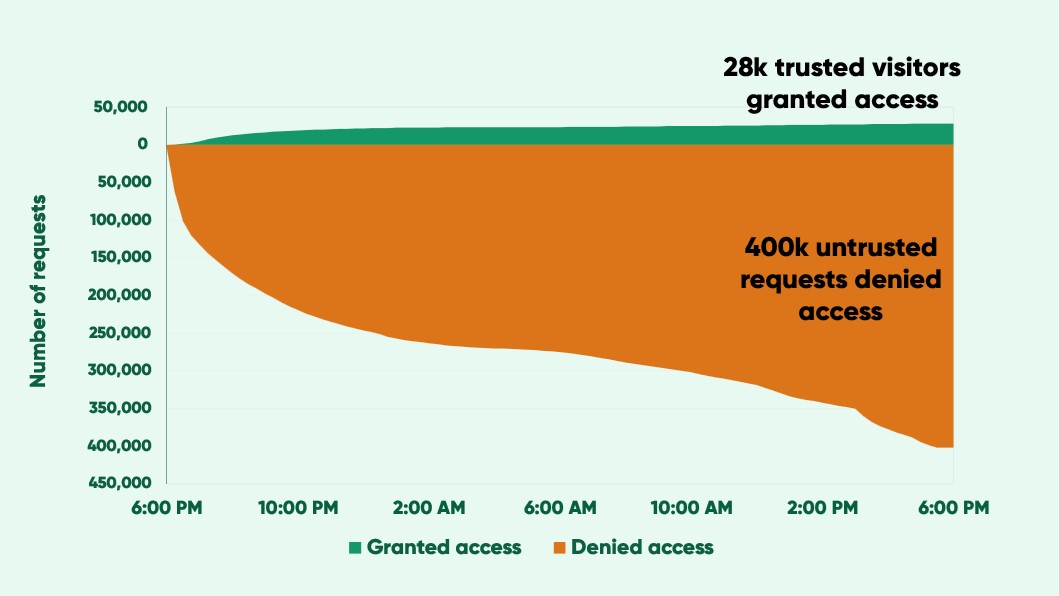
This kind of human-to-bot ratio is not uncommon during major online product drops.
Because product drops involve a mismatch between supply and demand, and many hyped items can be resold for higher prices on the secondary market, they’re a prime target for bots and resellers.
For unprotected ecommerce sites, shopping bots can enter your ecommerce store and purchase items before your real customers can even load their page.
This is unequivocally unfair. And customers know it.
By allowing bots to buy up your products, you miss connections with real customers and threaten their loyalty to your brand. Just as fairness inspires trust, unfairness damages trust, which hurts satisfaction, and discourages loyalty.
There are tools you can use to mitigate the impact of bots, but the gaming company above used Queue-it's bot mitigation and invite-only features to not just preserve loyalty, but also create it. By using the invite-only waiting room ensure only loyalty program members could access their drops, they grew their membership base by 40% in four months—all while keeping out hundreds of thousands of bots.
Quick tips for blocking retail bots:
- Use tools to monitor and identify bot traffic
- Use CAPTCHAs
- Block suspicious IP addresses
- Block outdated browser types
- Run a post-sale audit to identify orders to the same address or using the same credit card
- Use bot mitigation and web traffic management software
RELATED: Block Bots & Abuse During Hyped Drops With a Virtual Waiting Room
Product drops are high demand scenarios. People camp out, queue overnight, travel long distances, and even cause riots to get their hands on hyped items.
It’s one thing when this happens for brick-and-mortar retailers. They have locks on their doors and can hire security and limit the flow of people into the store.
But online, high demand for product drops consistently slows down and crashes websites. In fact, most of the examples we’ve used in this article—from PS5s to Nike sneakers to SKIMS dresses—have caused site crashes.
When hyped product drops are part of your business strategy, it’s essential you stay online to deliver on your promise to customers. Website crashes can cost millions, and have even further reaching impacts on consumer trust and loyalty.
Here’s a behind-the-scenes look at a major sneaker retailer’s traffic during a hyped product drop.
Within half an hour, traffic jumps 10x from below a thousand site visitors per minute to over 9,000 visitors per minute.
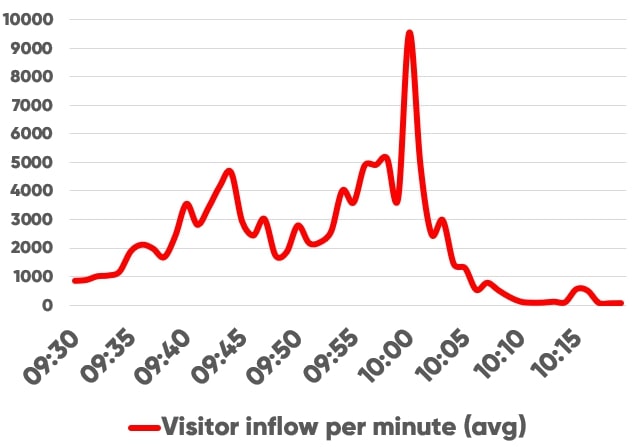
But because this sneaker retailer used a virtual waiting room, this 10x traffic peak didn't bring down their site.
Instead, visitors were gathered on a pre-queue countdown page before the drop. When the drop went live, all the visitors who arrived early were randomized, then flowed to the site in fair, first-in-first-out order—at exactly the rate the site could handle.
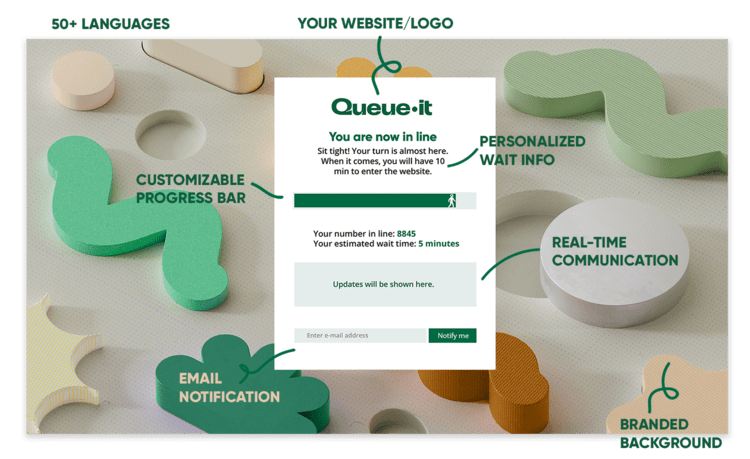
While brands often customize their waiting rooms both in style and in URL to look like the original site, the visitors in them are hosted on the virtual waiting room provider’s servers. This means no strain is placed on the target website’s servers while visitors wait for access.
The virtual waiting room is proven solution for high-demand, low-supply scenarios like product drops. For over a decade, it's been used by companies like Ticketmaster, The North Face, and Build-a-Bear, to ensure fairness and site reliability on their busiest days.
Prior to implementing a virtual waiting room, SNIPES, who run big sneaker drops across the U.S. and Europe, struggled to manage the "insane" traffic peaks these drops attracted.
Queue-it's virtual waiting room gave them the confidence they needed to handle the traffic, keep out bots, and ensure fairness on their busiest days.
"Nobody builds a website to handle hundreds of thousands of people just for a limited amount of time. Throughout the day it’s different, but having that major peak is insane. Queue-it is a great solution that saves the day and it works flawlessly."
ROBERT Williams, digital manager

Quick tips for preparing for high traffic:
- Load test ahead of major sales days to know what you can handle
- Cache static content on your CDN and run content on the Edge
- Identify & optimize site bottlenecks such as payment gateways and database calls
- Use a virtual waiting room to manage the flow of traffic to your site
RELATED: Ensure Fair & Reliable Drop Access With a Virtual Waiting Room
Channel management is a company’s activities related to selecting, enabling, and compensating channel partners. Every retail marketplace you decide to sell your product on—Amazon, Walmart, eBay, ASOS—is an additional channel.
While many businesses operate under the assumption that getting their products in as many places as possible is key to selling more, we know by now the principles of products drops run counter to this. With product drops, less is more.
This mirrors the luxury brand sales model. To maintain a luxurious customer experience, brands like Louis Vuitton and Goyard are exclusively sold by the brands themselves.
With product drops, less is more.
Many contemporary brands take a similar approach to channel management, especially with limited-edition product drops.
While SKIMS competitor Spanx is available just about everywhere, SKIMS is only available on skims.com and at 10 retailers worldwide. Supreme is sold exclusively in Supreme stores and its online store. Lululemon is only sold by Lululemon. Fenty Beauty is only stocked by 5 department stores.
RELATED: Exclusive Fenty by Rihanna Drop Sends Record Traffic to Harvey Nichols
By carefully selecting and limiting your channel partners, or shifting entirely to DTC for product drops, you can curate the product drop experience, maintain the aura of exclusivity for your drop, and focus the hype in on your brand.
Many of the strategies we’ve covered—from forming loyalty program relationships to ensuring a fair sale to blocking bots and abuse—are difficult or impossible to practice while selling through a third-party retailer.
While channel management lets retailers reap more of the benefits of product drops and concentrate the hype in one place, it also means many brands face more demand than their site can handle.
Gucci’s collaboration with The North Face, for example, launched exclusively on the Gucci site. Demand was so high the site crashed almost immediately.
The same occurred when Jacquemus collaborated with Nike, with their site crashing after over 500,000 people tried to get the collaboration.
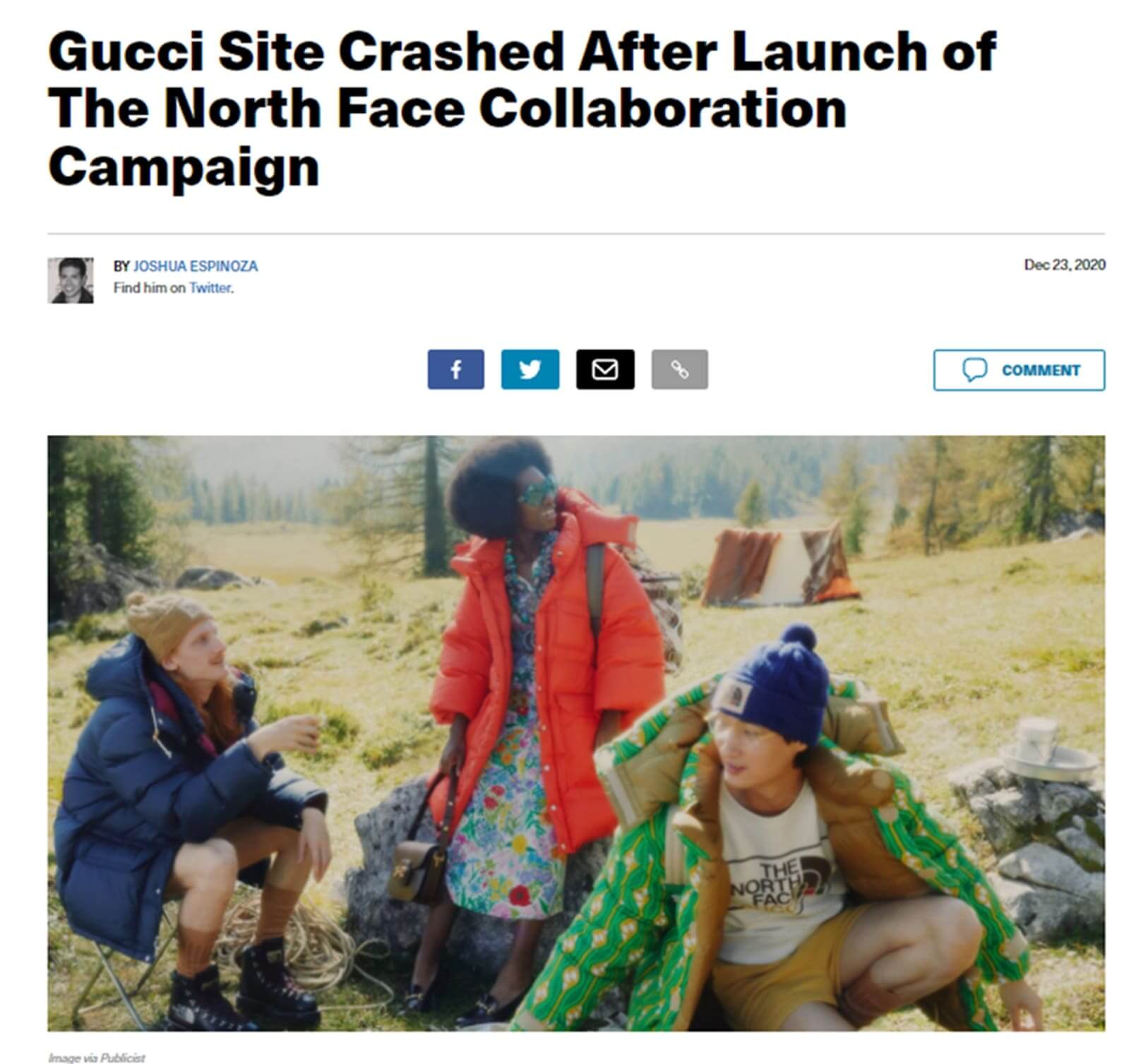
Member, early access, and invite-only sales work like the product drop model to build brand loyalty and encourage members and subscribers.
The core idea here is to add an extra layer of exclusivity to sales or product drops by granting select groups special access.
The upside of this is huge, as 70% of consumers spend more with brands when they’re part of a loyalty, member, or subscription program.
And the downside is minimal. You can run sales or product drops just as you usually would, the only difference being you give a select group first access.
91% of America's best apparel loyalty programs offer early or exclusive access to sales and new products. It's the number one most-desired loyalty program benefit after those that cost retailers money (i.e. free shipping and discount codes). The strategy is used by Target, Best Buy, Walmart, Nike, and just about every other big brand you can think of.
But gating access to exclusive sales is difficult to get right, especially for hyped product drops where bots and resellers stand to profit off their purchases. Most “exclusive” sales still face many of the challenges we’ve covered above: performance issues, overselling, bots, and unfair allocation of products.
When you send out early access or links exclusively to members, resellers quickly find these and share them with their cook groups.
When you gate access behind a login, you can’t control the flow of members to the product page, and credential stuffing and cracking bots will work hard to try steal customer accounts.
That’s why Queue-it has developed the invite-only waiting room, a secure and scalable way to control sales access and engage and grow your customer base.
With the Invite-only waiting room, only the customers you choose get to access your sale. To set it up, you simply:
- Upload the list of customers you want to invite to your drop or give early access to
- Send out unique, single-use links OR add an email verification field to your waiting room page
- Run your drop, confident no one but the people you want can get access
Scroll through the carousel below to see the user experience your customers can get when using the Invite-only waiting room.
The invite-only waiting room lets you use your hyped drop as an opportunity to reward loyal customers and incentivize sign-ups to your loyalty program. It empowers you to turn demand into data.
One major apparel brand we work with, for example, puts their loyalty program sign-up form on the general access queue page. They offer customers instant access to the faster Invite-only queue if they sign up to the loyalty program. Across just two drops, this technique has driven over 50,000 new loyalty program sign-ups.
RELATED: Reward Loyal Customers with Invite-Only Waiting Rooms
“Running the sale with Queue-it in place made sure we achieved our goal of delivering an enhanced experience for our loyal members. We gave them the priority access we had promised them as a cornerstone membership benefit.”
TRISTAN WATSON, ENGINEERING MANAGER

Product drops have come a long way from their origins in streetwear and sneaker culture. Not only are major brands across industries—from McDonald’s to Louis Vuitton to IKEA—embracing product drops, but contemporary brands like Supreme and SKIMS have skyrocketed in popularity thanks to the drop business model that keeps customers wanting more.
Every brand can take inspiration from product drop marketing and the business model that’s created drop culture. The strategies we’ve outlined in this article are available to all retailers. These include:
- Supercharging scarcity marketing
- Building anticipation & hype
- Offering presale registrations & drop notifications
- Delivering a fairer experience
- Blocking bots & abuse
- Ensuring your site can deliver on demand
- Curating your brand with channel management & DTC
- Nurturing loyalty with Invite-only access
And if you’re successful with your product drop strategy, you can expect to reap these 5 key benefits:
- Build brand awareness, affinity & community
- Drive sales & hype with drops instead of discounts
- Cultivate brand relationships with loyalty programs
- Create memorable customer experiences
- Boost sales of core product range
(This blog has been updated since it was originally written in 2022).

